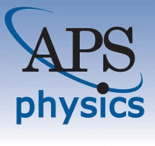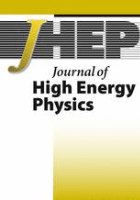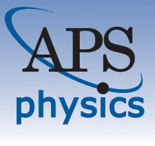
ACTA PHYSICA POLONICA B
Scope & Guideline
Advancing Physics through Rigorous Inquiry
Introduction
Aims and Scopes
- Nuclear Physics:
The journal publishes research on the properties and behaviors of nuclear matter, including studies on nuclear structure, decay processes, and reactions involving heavy ions. - Particle Physics:
A core area of focus, encompassing theoretical and experimental investigations into fundamental particles, interactions, and symmetries, including studies related to the Standard Model and beyond. - Quantum Field Theory:
Theoretical explorations of quantum fields, including methods and models that enhance the understanding of particle interactions and the underlying principles governing them. - Statistical Mechanics and Thermodynamics:
Research that applies statistical mechanics to understand the thermodynamic properties of various physical systems, particularly in high-energy and nuclear contexts. - Computational Physics:
Development and application of computational techniques, including machine learning and numerical simulations, to solve complex problems in particle and nuclear physics. - Multidisciplinary Approaches:
Integration of concepts from various fields such as astrophysics, condensed matter physics, and mathematical physics to address complex physical phenomena.
Trending and Emerging
- Quantum Information and Machine Learning:
An increasing number of studies are exploring applications of machine learning techniques in quantum physics, particularly for analyzing large datasets from particle collisions and enhancing predictive models. - QCD Phase Diagram Studies:
There is a notable rise in research focused on the Quantum Chromodynamics (QCD) phase diagram, particularly regarding the critical points and transitions in high-energy nuclear collisions. - Relativistic Heavy-Ion Collisions:
Research on the dynamics and outcomes of relativistic heavy-ion collisions has gained traction, reflecting a growing interest in understanding the quark-gluon plasma and the fundamental state of matter. - Thermal Models in Particle Production:
Emerging trends indicate a focus on thermal models to interpret particle production in high-energy collisions, which provides insights into the early universe conditions and nuclear matter properties. - Advanced Computational Methods:
The application of advanced computational methods, including numerical simulations and theoretical modeling, has become increasingly prevalent, highlighting a shift towards data-driven research in theoretical physics.
Declining or Waning
- Classical Mechanics and Nonlinear Dynamics:
Research in classical mechanics and related nonlinear dynamics, although foundational, has seen a decrease in favor of more contemporary topics like quantum dynamics and relativistic effects. - Low-Energy Nuclear Reactions:
Studies focusing on low-energy nuclear reactions have become less prominent, possibly as researchers shift towards high-energy collisions and heavy-ion physics. - Experimental Techniques in Condensed Matter Physics:
Although still relevant, experimental studies specifically in condensed matter physics have waned, as the journal's focus has increasingly gravitated toward high-energy and particle physics.
Similar Journals

Bulletin of the Lebedev Physics Institute
Bridging the gap between discovery and dissemination.Bulletin of the Lebedev Physics Institute is a peer-reviewed journal dedicated to advancing the field of physics and astronomy, published by PLEIADES PUBLISHING INC. With a print ISSN of 1068-3356 and an e-ISSN of 1934-838X, this journal has been an essential platform for disseminating significant research findings since its inception in 2009. It continues to provide insight into various areas of general physics and astronomy, and consistently aims to foster innovative discussions among researchers and scholars. Although currently positioned in the Q4 category within the 2023 Scopus rankings, it serves a vital role in linking emerging trends with established research, catering to a global audience seeking to explore complex concepts within the field. By contributing to the body of knowledge, the Bulletin supports academic growth and collaboration across diverse sectors. Despite its challenges in ranking, the journal’s unique perspectives and ongoing publications underscore its commitment to pushing the boundaries of scientific inquiry in the United States and beyond.

Romanian Journal of Physics
Elevating physics discourse to new heights.Welcome to the Romanian Journal of Physics, a distinguished platform dedicated to advancing the field of physics and astronomy since its inception. Published by EDITURA ACAD ROMANE, this journal plays a pivotal role in disseminating high-quality research from Romania and around the globe, with an impressive impact factor that reflects its rigorous academic standards. With a focus on a broad range of topics in general physics and astronomy, it proudly maintains a Q2 ranking in its category for 2023, positioning itself among the top journals in the field. The journal, which has been converging valuable research contributions from 2008 until 2024, is accessible to a wide audience of researchers, professionals, and students interested in the latest developments and discoveries in physics. While it operates under a traditional publication model without Open Access, its commitment to quality research ensures that the contributions featured in its pages resonate well within the scientific community. We invite you to explore the rich findings published in the Romanian Journal of Physics and to engage with the vital discussions shaping the future of physics.

PHYSICAL REVIEW C
Exploring the Depths of Nuclear SciencePHYSICAL REVIEW C is an esteemed journal published by the American Physical Society, dedicated to advancing knowledge in the fields of nuclear and high-energy physics. With a proud ISSN of 2469-9985 and an E-ISSN of 2469-9993, it has established itself as a leading journal, currently ranked in the Q1 category for its field in 2023, positioning itself in the top tier of scholarly publications. Based in the heart of the United States, at One Physics Ellipse, College Park, MD, PHYSICAL REVIEW C is known for its rigorous peer-review process and is a vital platform for researchers to share their pioneering findings. As part of a prestigious lineup backed by an impressive impact factor, this journal garners significant attention, reflected in its Scopus ranking as #18 out of 87 in the Nuclear and High Energy Physics category, placing it within the 79th percentile. While it currently does not offer open access options, it remains an essential resource for professionals and students seeking to deepen their understanding of nuclear interactions, reaction dynamics, and the fundamental principles governing subatomic particles. The convergence of innovative research from 2016 to 2024 makes it a timely reservoir for groundbreaking studies, thus reinforcing its importance in the scientific community.

JOURNAL OF HIGH ENERGY PHYSICS
Pioneering peer-reviewed research for a global scientific community.JOURNAL OF HIGH ENERGY PHYSICS, published by SPRINGER, stands at the forefront of research in the fields of nuclear and high energy physics. With an impressive impact factor and a Scopus ranking of #5 out of 87 in its category, it sits comfortably in the 94th percentile of academic journals worldwide. Since its inception in 1997 and transitioning to Open Access in 2014, the journal has committed itself to the dissemination of peer-reviewed, cutting-edge research that fosters collaboration and innovation across the global scientific community. Located in Germany and reaching audiences worldwide, the journal aims to provide a platform for scholars and researchers to share their findings, thus propelling advancements in theoretical and experimental physics. As it converges into 2024, the JOURNAL OF HIGH ENERGY PHYSICS continues to be an essential resource for anyone engaged in this dynamic field of study.

PHYSICAL REVIEW D
Connecting Scholars to the Pulse of Modern PhysicsPHYSICAL REVIEW D, published by the American Physical Society, is a premier journal dedicated to the rapid dissemination of significant research findings in the fields of Nuclear and High Energy Physics as well as Physics and Astronomy. With an impressive Impact Factor and a prestigious Q1 ranking in 2023, it stands as one of the leading journals in its domain, with a Scopus ranking of #6 out of 87 in its category, placing it in the 93rd percentile. The journal welcomes rigorous theoretical and experimental studies that advance understandings in particle physics, cosmology, and quantum field theory. Although it does not provide open access, researchers gain a significant platform to reach a global audience and contribute to the ongoing discourse within the scientific community. Published regularly since its convergence starting in 1989, it remains essential for both emerging and established scholars looking to stay at the forefront of high-energy and nuclear physics research.

PRAMANA-JOURNAL OF PHYSICS
Championing Quality Research in Physics and AstronomyPRAMANA-JOURNAL OF PHYSICS, published by the esteemed Indian Academy of Sciences, serves as a pivotal platform for disseminating high-quality research in the field of Physics and Astronomy. Established in 1973, this journal aims to promote significant findings in various branches of physics, encapsulating both theoretical and experimental research. With a solid reputation reflected in its Q2 ranking in the Physics and Astronomy (miscellaneous) category and a commendable 94/243 rank in the Scopus database, PRAMANA stands at the forefront of the academic community. Researchers, professionals, and students benefit from its accessible compilation of innovative studies, contributing richly to the scholarly discourse. The journal, operating from its base in Bangalore, India, is committed to advancing knowledge through rigorous peer-reviewed articles, ensuring that all contributions hold merit in expanding our understanding of the physical world.

PHYSICS OF ATOMIC NUCLEI
Illuminating the Path of Atomic DiscoveriesPHYSICS OF ATOMIC NUCLEI is a distinguished journal dedicated to advancing the understanding of nuclear and particle physics, published by PLEIADES PUBLISHING INC. With its ISSN 1063-7788 and E-ISSN 1562-692X, this journal serves as a vital resource for researchers, professionals, and students in the fields of atomic and molecular physics, as well as high-energy physics. The journal has been actively contributing to the scientific community since its inception in 1996 and continues to publish valuable findings through 2024. Despite its current standing in the Q4 category for both Atomic and Molecular Physics, and Nuclear and High Energy Physics, there is an abundance of potential for growth and impact in these disciplines, as evidenced by its placement in the Scopus rankings. While the journal does not currently offer open access, it remains committed to disseminating quality research that informs and engages the scientific community. Explore PHYSICS OF ATOMIC NUCLEI to stay at the forefront of nuclear physics research and contribute to the dialogue in this critical area of study.

Annals of Physics
Leading discoveries in the realm of Physics and Astronomy.Annals of Physics is a premier journal published by Academic Press Inc Elsevier Science, specializing in the expansive field of Physics and Astronomy. Since its inception in 1957, this journal has played a pivotal role in disseminating high-quality research and advancements across various sub-disciplines of physics. With a notable impact factor making it rank in the Q1 category for 2023, it stands among the top tier of scholarly publications, specifically sitting at Rank #63 out of 243 in the field, placing it in the 74th percentile according to Scopus metrics. Researchers are encouraged to submit their findings to reach a broad audience without the constraints of Open Access fees, promoting extensive visibility within the academic community. As we look ahead to 2024, Annals of Physics continues to be an essential resource for professionals, students, and academics striving to advance the frontiers of knowledge in physics and astronomy.

PROGRESS IN PARTICLE AND NUCLEAR PHYSICS
Pioneering Discoveries in Nuclear DynamicsPROGRESS IN PARTICLE AND NUCLEAR PHYSICS is a prestigious academic journal published by Elsevier, focusing on the dynamic fields of particle and nuclear physics. Established in 1978 and continuing through 2024, this journal is recognized for its significant contributions to the scientific community, holding a Q1 ranking in Nuclear and High Energy Physics and topping the Scopus ranking in its category. With an impactful platform that encourages the dissemination of groundbreaking research, it attracts a diverse readership of researchers, professionals, and students eager to explore the latest advances in these fields. The journal is headquartered in Amsterdam, Netherlands, and provides an essential resource for those seeking to understand complex phenomena in particle and nuclear science. Although it does not offer Open Access options, it continues to uphold a reputation of excellence and rigor, making it a vital source of information in its domain.

European Physical Journal Plus
Connecting Ideas, Inspiring DiscoveriesThe European Physical Journal Plus, published by Springer Heidelberg, is a reputable open-access journal that serves as a vital platform for innovative research across various disciplines, including physics, astronomy, and chemical engineering. With an impressive impact factor reflected by its Q2 ranking in both Fluid Flow and Transfer Processes and Physics and Astronomy (Miscellaneous) categories, this journal plays a crucial role in disseminating high-quality research findings. Since its inception in 2011, it has fostered interdisciplinary collaboration and encourages the exploration of fundamental principles and applications. The journal also boasts a respectable Scopus rank, indicating its solid influence and reach within the scientific community. Researchers, professionals, and students alike will find the journal to be an essential resource for staying abreast of advancements and trends in these dynamic fields, while its open-access model ensures that valuable insights are accessible to a broader audience.